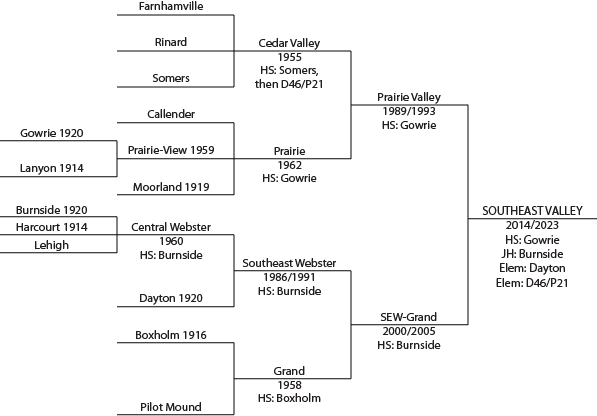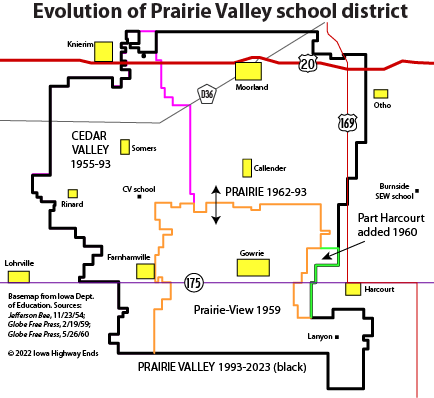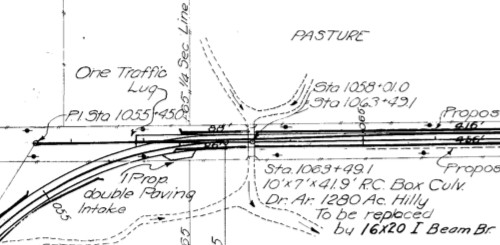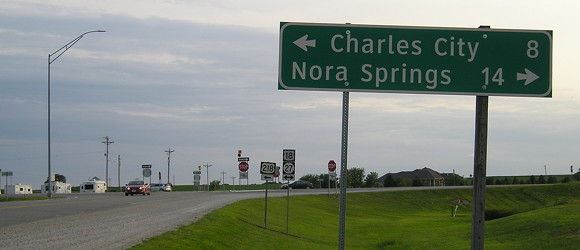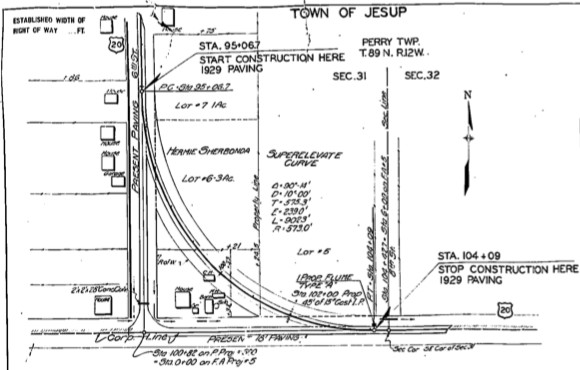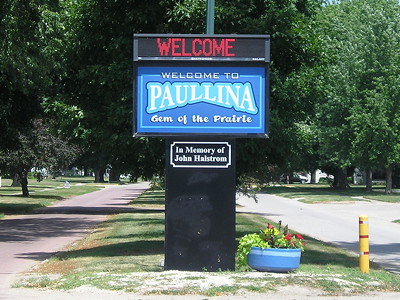The last part of the White Pole Road between Anita and Adel under state control is losing its original concrete, but it hasn’t been visible for more than a quarter-century.
A 2-mile segment of IA 25 between Casey and Menlo uses old US 6. This segment, which was US 32 in 1926-31, went from gravel to paved in nearly all of western Iowa in 1930. It just so happens that the middle of this two-mile segment is where contracts were split, and paving in Beaver Township (through Menlo) was finished days before Thanksgiving 1929.
From the Casey Vindicator via the June 12, 1930 Guthrie Center Times:
To give our readers some idea of the magnitude of that day’s [June 10] work we give the following general statement of operations: First the road bed must be put to the proper grade, then the more perfect subgrade must be constructed, the steel forms which serve the double purpose of forms for the slab and a track for the mixing and finishing equipment must be set up. The crushed rock, sand and cement must be unloaded from the railway cars and hauled by truck to the mixer from which it is spread, packed, leveled and smoothed, 100 feet, linear measure of 18 foot paving requires practically one carload of crushed rock, one-half carload of sand and one-fourth carload of cement. In other words the 1430 feet of paving laid on Tuesday required approximately 27 carloads of material to build.
The DOT is going to completely rebuild this section of road this summer. According to a short video/slideshow, the 91-year-old concrete still exists underneath a 3-inch asphalt overlay (with widening) from 1984. This means, by inference, that when US 6 was shifted onto I-80 in 1980, drivers were navigating 50-year-old pavement! In 1970s cars, which are practically boats! On an 18-foot-wide road!
I wonder how many other roads in Iowa still have original concrete under asphalt overlays, waiting for the inevitable complete-rebuild. As for the rest of the White Pole Road, we’d have to ask the Guthrie County engineer, but I strongly suspect that hasn’t changed.
[rant]
Now, about that video/slideshow: Since the start of the year, the project meeting site has included almost zero project documents. Instead, each page demands registration and either visiting a different page or opening an app (FAQ here, and be warned, “stakeholders” are involved).
I do not want to have to create an account to see project files. I do not want to have to deal with something “optimized for mobile.” I want to be able to download a PDF — a 30-year-old-format, universally viewable, local-copy PDF. Why is this being made so difficult?
[/rant]
Yeah, yeah, Oldthinker Unbellyfeels Mobile Optimisation. I’m sure there’s a cloud I can yell at.

